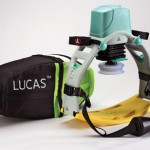Choking is a common emergency that can happen to anyone, and it can have fatal consequences if not handled properly. Adults often choke on food, while young children and even infants have a high risk of choking on small objects. Although the feeling of choking is a scary ordeal, the good news is that first aid for choking is easy to remember and simple to perform.
There are several signs of choking:
- Hands grasping at the throat is the international sign that a person is choking
- The victim will be unable to speak
- They will have difficulty breathing or not be able to breathe at all
- The lips, nails, or skin will be turning slightly blue
If a person is obviously choking and is showing any of these signs, perform choking first aid immediately.
*Please note: if a person is coughing or has the ability to talk, they are NOT choking. Never perform abdominal thrusts on a person who is not choking.
To use choking first aid on an adult, use the recommended “find-and-five” approach by alternating between five back blows and five abdominal thrusts.
A back blow is a firm, yet swift strike on the victim’s back between their shoulder blades. Back blows should be performed with the heel of one hand while your other hand is being used for balance – either to steady the victim or yourself. After five quick back blows, take only a few seconds to see if the item has dislodged.
If the back blows did not dislodge the item the person is choking on, quickly move to the next step in choking first aid by performing five abdominal thrusts. Another term commonly used for this motion is the Heimlich maneuver: standing behind the victim, wrap your arms around their abdomen and make a fist with one hand. Place your fist on, or right above, the victim’s navel and cover that fist with your other hand. Quickly thrust both hands toward yourself in a slight upward motion as if attempting to lift the victim. These thrusts should dislodge the item from the victim’s airway.
After performing the five back blows and five abdominal thrusts, take just a few seconds to see if the obstruction has been dislodged. If it has, the item would have been expelled and the victim would be coughing or breathing. If it has not, then continue to alternate between the back blows and abdominal thrusts of choking first aid until the victim loses consciousness, at which point you should immediately call 911 and begin CPR.
Interested in knowing more? Visit SimpleCPR to learn more about first aid for choking and other common first aid procedures.


